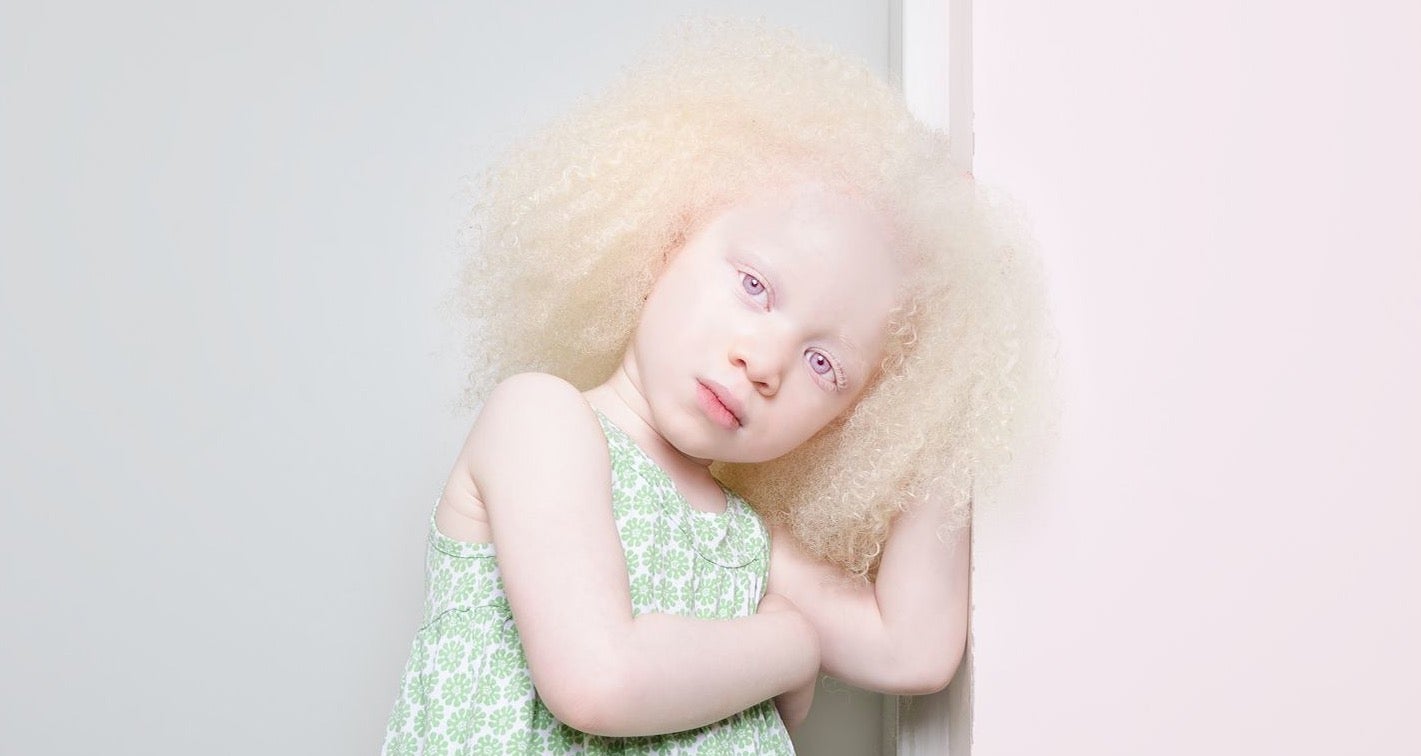Have you ever heard the word albino? It's a word that's sometimes used to describe a condition called albinism (say: AL-buh-nih-zum). Humans, animals, and even plants can have this condition, which means that the person, animal, or plant doesn't have the usual amount of pigment, or color.
You might know that albinism causes a kind of pale appearance. But what exactly causes albinism?
Understanding Albinism
To understand albinism, you need to first know about melanin (say: MEL-uh-nin). Melanin is a chemical in our bodies that colors our skin, eyes, and hair. It's made by melanocytes (say: muh-LAH-nuh-sytes), which are cells found in the bottom layer of your skin.
Sometimes, a kid or an animal might be born whose body can't make a normal amount of melanin. This is what happens with albinism, which can show up as a lack of pigment (color) in the skin, eyes, hair, fur, or feathers of that kid or animal. There are different kinds of albinism. Some kids with albinism might have pale skin or hair. Other types of albinism might affect only the eyes.
Most kids with albinism have blue eyes, and others have brownish eyes. In some cases of albinism, a kid's eyes might appear pink or reddish. This isn't because the iris (the colored part of the eye) is pink or red. It's because the iris actually has very little color. The eyes appear pink or red because the blood vessels inside of the eye (on the retina) show through the iris.
Stay in the Shade
 Besides giving your skin, eyes, and hair its color, melanin helps protect your skin from the sun. You know how a person's skin gets darker after hanging out at the beach? That's your melanin at work, darkening your skin to give it more protection from the sun's rays. So, without enough melanin, your skin won't be able to protect itself. Kids with albinism can get sunburned very easily.
Besides giving your skin, eyes, and hair its color, melanin helps protect your skin from the sun. You know how a person's skin gets darker after hanging out at the beach? That's your melanin at work, darkening your skin to give it more protection from the sun's rays. So, without enough melanin, your skin won't be able to protect itself. Kids with albinism can get sunburned very easily.
That's why it's a good idea for anyone with albinism to stay covered while in the sun (or even to stay out of the sun completely). Kids with albinism can go to the beach and spend time outdoors, but they have to use lots of sunscreen and watch the amount of time they're soaking up rays. Kids with albinism should talk to their doctors to find out whether it's OK to spend any time in the sun.
Vision Problems
Some kids with albinism wear glasses or contact lenses to help them see better. Others might need eye surgery. An eye doctor can help figure out ways to help a person with albinism see better.
Another problem for kids with albinism is that their eyes can be very sensitive to light. The iris usually helps control the amount of light coming into your eye and hitting your retina, which is located at the back of your eyeball. When a person has albinism, the iris doesn't have enough color and can't properly shield the retina from light. So, kids with albinism often squint in bright light. Wearing sunglasses or tinted contact lenses can help make a kid with albinism more comfortable out in the sun.

What's Life Like for Someone With Albinism?
Kids with albinism are just like other kids — they just need to talk with their doctor about taking care of their eyes and skin, especially if they're going to be in the sun. And albinism doesn't stop kids from reaching their goals. Lots of kids with albinism have grown up to be doctors, lawyers, musicians, and athletes. Most kids with albinism can be anything they want to be, just like any other kid!
PUBLISHED BY: FARHATUL SYAHIRAH
No comments:
Post a Comment